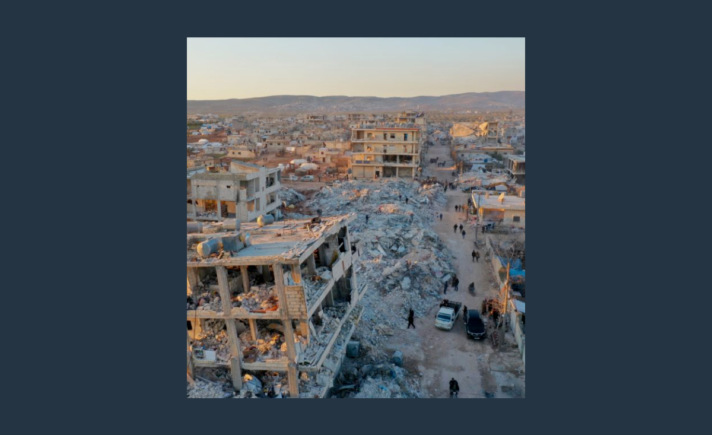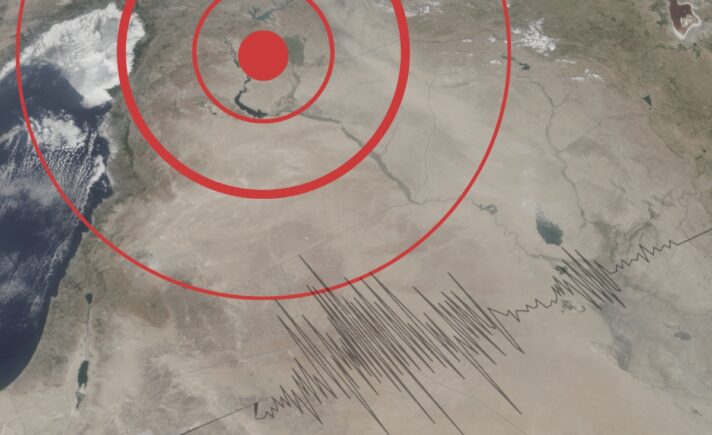The Israeli air force targeted a number of sites in Latakia Governorate late Monday night, chief among them a warehouse linked to the so-called Technical Industries Institute, east of Latakia city, said by the Israeli military to have housed advanced weapons manufacturing systems “about to be transferred on behalf of Iran to Hezbollah in Lebanon.”
After the strikes, the Russian defense ministry announced the loss of contact with an IL-20 aircraft present in the area of operations, with fifteen Russian soldiers on board. It was subsequently revealed the Syrian regime’s own air defenses had brought down the Russian aircraft by mistake during an attempt to respond to the Israeli attack.
The following day, Russia’s President Vladimir Putin stated during a press conference alongside the Hungarian prime minister that his country would open an investigation into the circumstances of the incident, and would increase measures to protect its soldiers in Syria, without directing any accusation of responsibility toward Israel. Subsequently, Israel held the Syrian regime and Iran responsible for the downing of the Russian aircraft, after expressing its “sorrow” for the Russian loss. For their part, Russian officials voiced their displeasure at Israel’s neglecting to inform Russia of its intention to carry out the strikes until one minute before their occurrence, implying that previous strikes were carried out with Moscow’s prior knowledge and consent.
This bombing of regime sites on the Syrian coast was the second within two days, after missiles had struck a warehouse close to Damascus International Airport thought to be used for storing newly-arrived weapons. Explosions, likely from Israeli strikes, were also seen at Damascus’ al-Mezze military airport a few days previously.
Israel has, of course, been carrying out air strikes on the Assad regime and Iran’s forces and allied militias in Syria for years. Recent months, however—specifically the five months since April—have seen an escalation in these strikes, most obviously in the large-scale raid carried out overnight on May 9/10, when “nearly all the Iranian infrastructure in Syria” was destroyed, according to the Israeli defense minister.
Ever since 2011, Israel has customarily executed strikes on Assad regime targets, in most cases without claiming responsibility for them. As with Monday’s strike, the Israeli media often reports these as targeting weapons being transferred to Lebanon’s Hezbollah.
Both the size and type of these strikes has changed in recent months, however. Following the large attack in May, which encompassed over seventy targets, and coincided with the Trump administration’s withdrawal from the Iranian nuclear deal, Israel continued to strike regime sites doubling as bases for Iranian forces in Syria, such as the Tiyas military airbase (also known as “T4”) east of Homs, which has been hit on no fewer than three separate occasions since April, with Israel later saying the site was used as a base from which Iran’s Revolutionary Guard operated drones within Syria.
Recent Israeli strikes have also hit targets in Aleppo, close to al-Nayrab airport, where another Iranian Revolutionary Guard base is located, as well as numerous sites in Hama Governorate, including the so-called Scientific Studies and Research Center, sanctioned by the US Treasury Department for its alleged role in developing the regime’s chemical weapons program. In general, Israel persists in hitting any target it suspects of being used for the development of surface-to-surface missiles, under Iranian supervision and with Iranian support, for the purpose of then transferring them to Hezbollah.
The Party of God, for its part, has also faced several direct Israeli strikes on its positions, most prominently the hit on al-Dabaa airport close to al-Qusayr at the end of May, which resulted in the killing of a senior commander, according to media reports.
In the Damascus vicinity, Israel’s strikes have concentrated on Hezbollah and other Iranian militia bases close to al-Kaswa, southwest of the capital, in addition to the Damascus International and al-Mezze airports. It’s thought that the Revolutionary Guard and Hezbollah possess bases and warehouses close to al-Kaswa used by their forces in southern Syria as part of the process of transferring weapons to Hezbollah in Lebanon.
Throughout these months and years, Israel has carried out all its strikes without any practical opposition from Moscow. In September 2015, when Russia began its direct military intervention in Syria, the two parties agreed to create a mechanism of military coordination and conflict prevention; a mechanism backed and enforced at the highest levels between Moscow and Tel Aviv. Russia has always maintained that its presence in Syria serves Israel’s interests and security—the Russian deputy ambassador to Israel, Leonid Frolov, for example, told the Times of Israel earlier this year Moscow would stand with Israel in the event of any attack against it.
Two weeks ago, Israel’s intelligence minister, Yisrael Katz, stated that over 200 military operations had been carried out by Israel within Syrian territory since 2017. If this sounds like an all-out war waged from the sky, it’s not one that implies a total clash with the Assad regime, for in fact the Israeli position was categorically in favor of the regime retaking control over southern Syria, and expelling opposition forces therefrom, so long as Israel could continue to weaken any military capabilities held by the regime, Hezbollah, and Iran’s militias that could conceivably represent a threat to Tel Aviv. This in turn comes amid an international “understanding” about these Israeli measures; one to which Russia is a party, and which ultimately supports the Assad regime and protects it from the Syrians rebelling against it.
[Editor’s note: This article was originally published in Arabic on 19 September, 2018]







